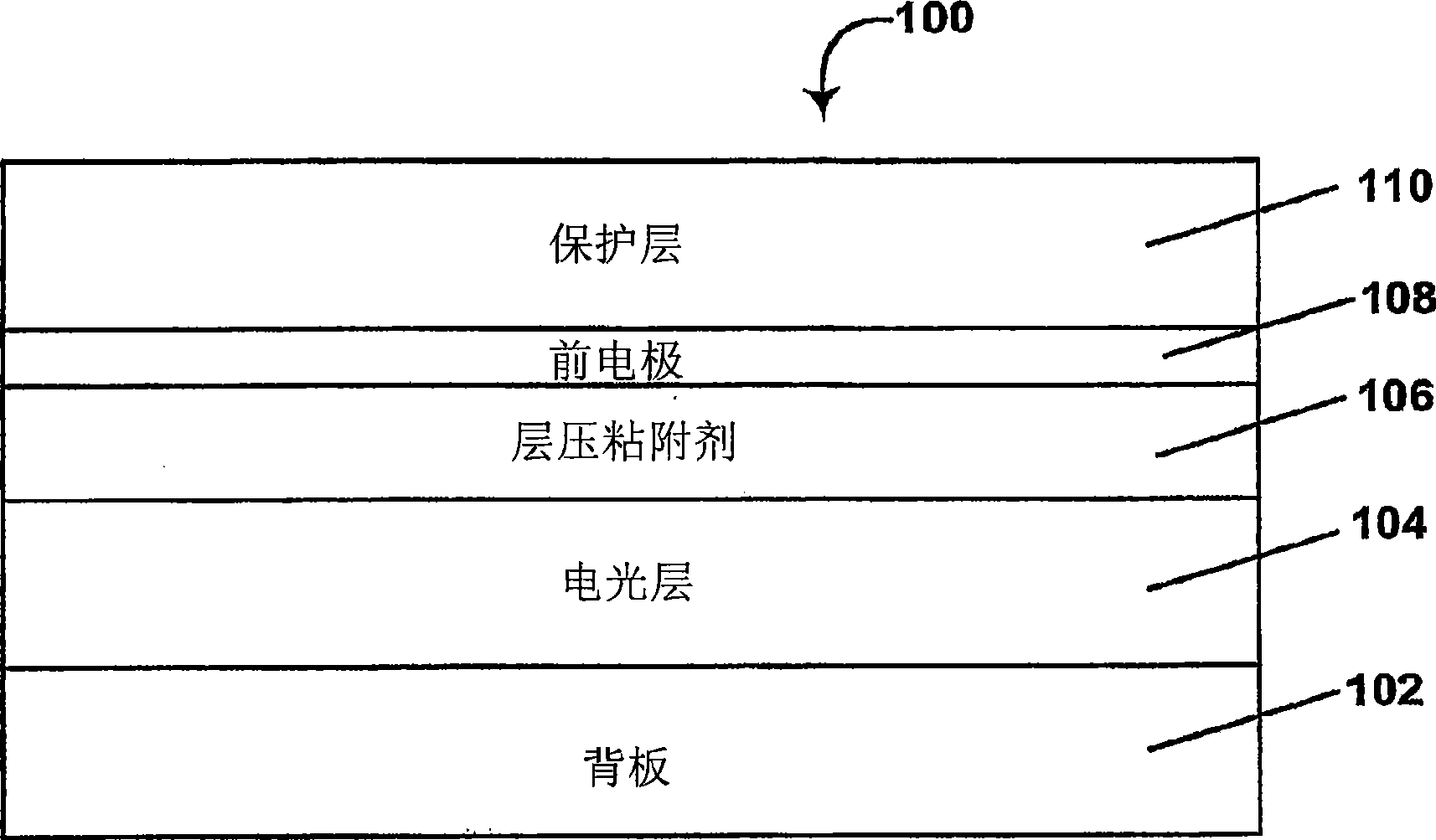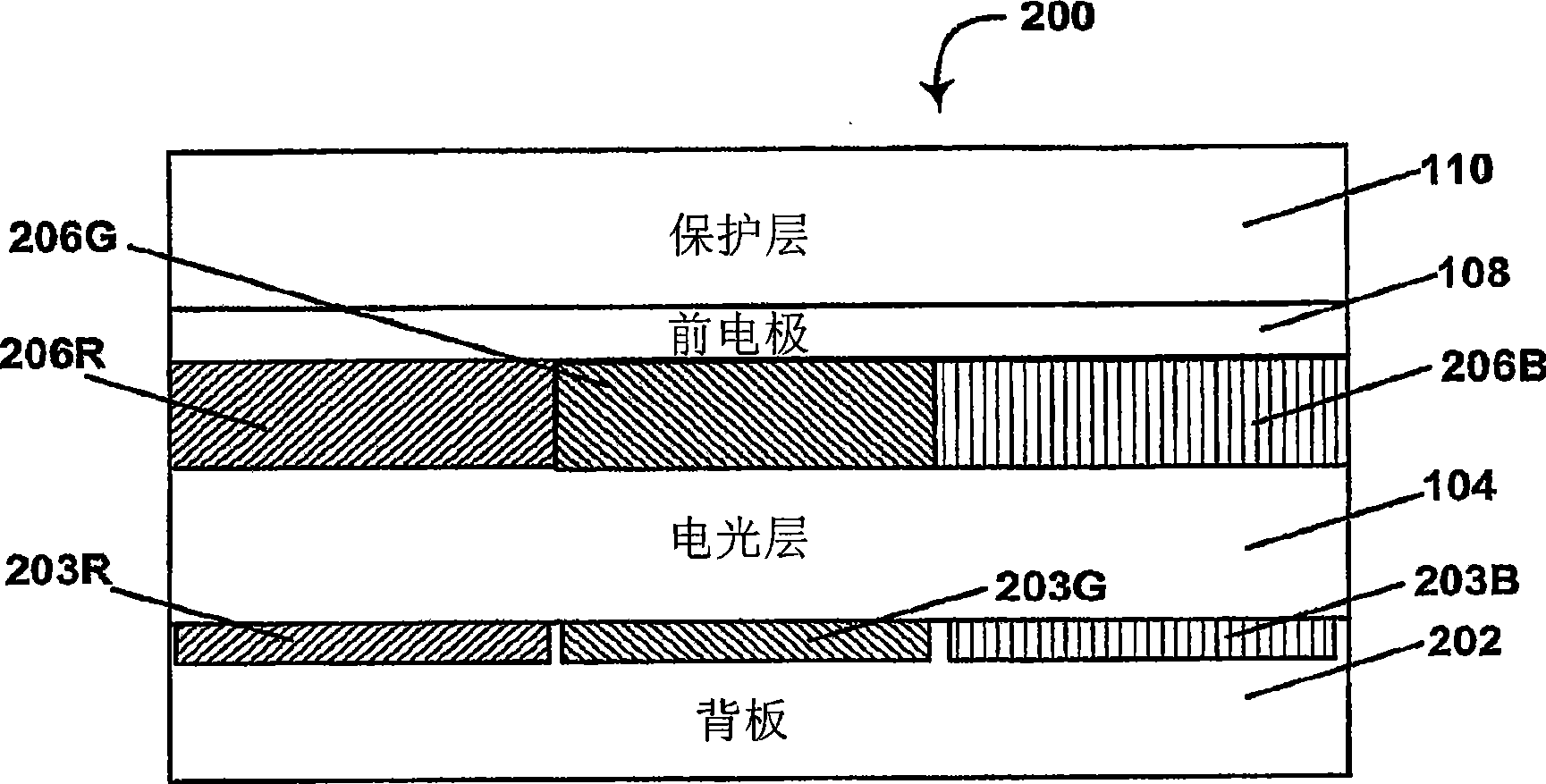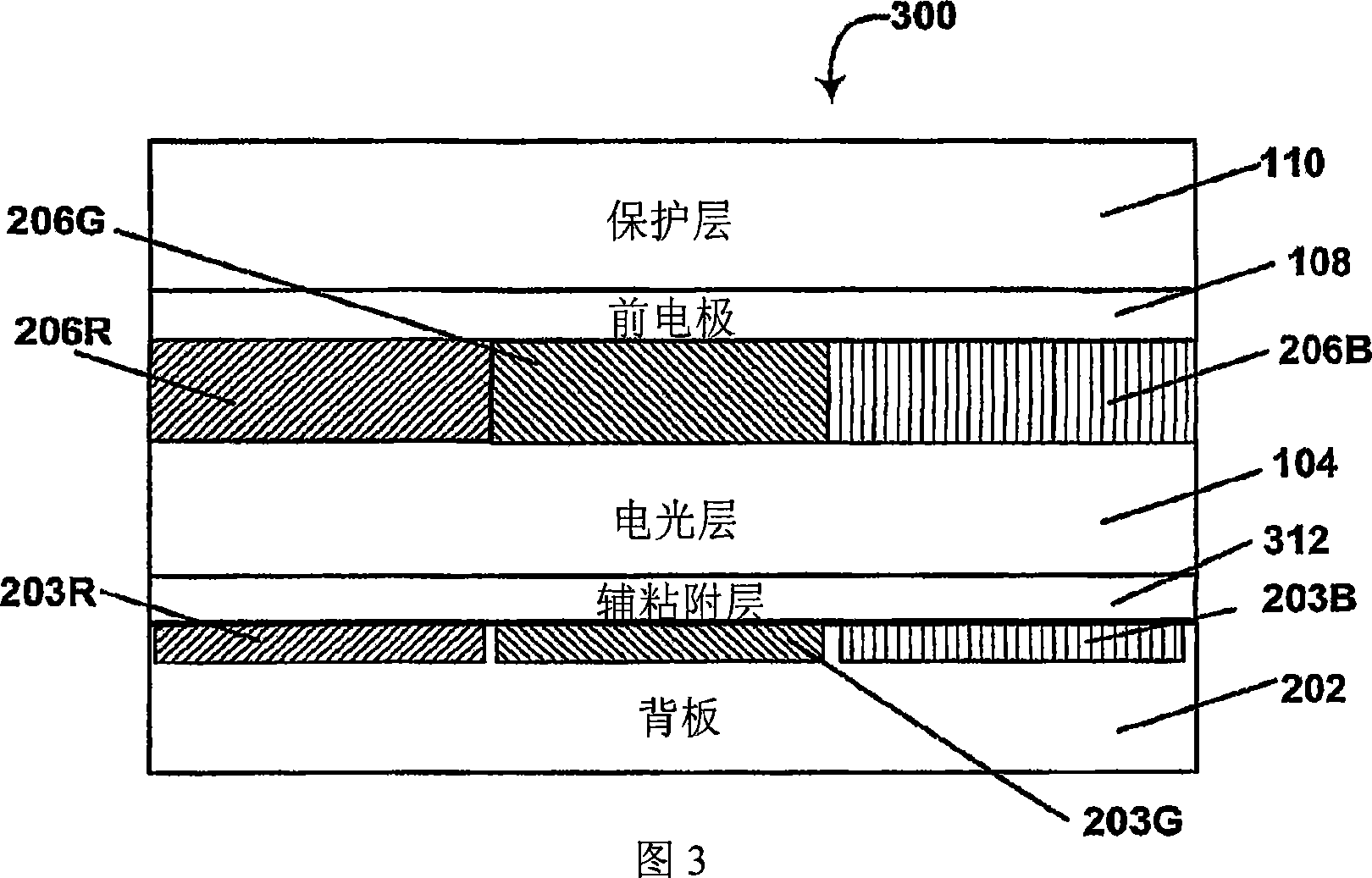Components for electro-optic displays
An electro-optic display and electro-optic technology, applied in optical components, instruments, optics, etc., can solve problems such as not helping electro-optic layer conversion
- Summary
- Abstract
- Description
- Claims
- Application Information
AI Technical Summary
Problems solved by technology
Method used
Image
Examples
example 1
[0084] Example 1: Fabrication of an experimental display
[0085] The polymer viscosity was substantially as described in paragraphs [0067] to [0074] of U.S. Patent Publication No. 2002 / 0180687 except that Dow Corning Q2-521 "Superwetting Agent" was added as a coating aid. A slurry containing the electrophoretic vesicles was prepared in the mixture. The slurry was then bar coated on the aluminum coated surface of an aluminized PET release sheet. In one process, the same aluminized surface has been pre-coated with a 20 μm layer of lamination adhesive of the type described in U.S. Patent No. 7,012,735 and doped with 20,000 ppm of butylammonium hexafluorophosphate; in a second process, a layer of the same 20 μm layer of the same lamination adhesive was laminated onto the ITO-coated surface of a PET / ITO release sheet, and the resulting subassembly Lamination to the electrophoretic layer / release sheet assembly such that the adhesive layer is laminated to the electrophoretic layer...
example 2
[0095] Example 2: Electro-optic test
[0096] The experimental display prepared in Example 1 above was driven between the extreme black and white optical states with a drive pulse of ±15 V, 500 ms, and the reflectance of these two extreme optical states was measured. The tests were performed at room temperature (20°C) and 0°C. in the attached picture Figure 4 shows the dynamic range (measured in L * The difference between the extreme black and white states in units (where L * Using the usual International Commission on Illumination (CIE) definition:
[0097] L * =116(R / R 0 ) 1 / 3 -16,
[0098] where R is the reflectance and R 0 is the standard reflectance value). In each test, the left column shows the results obtained at 20°C, while the right column shows the results obtained at 0°C.
[0099] from Figure 4 As can be seen in the "inverted" structure of the control and the present invention ( Figure 4 The two sets of columns on the left hand side, in the sense tha...
example 3
[0101] Example 3: Resolution
[0102] The resolution of the control display and the display of the present invention can be evaluated by microscopic examination of the display formed on the glass backplane; Figure 5 shows the observed differences. Such as Figure 5 As noted in , each of the displays used for testing consisted of two pixels separated by a 100 μm gap in which there was no ITO layer and therefore could not be switched. exist Figure 5 The left-hand side shows the control display (conventional FPL structure), in Figure 5 On the right hand side is the display of the present invention. Figure 5 Each side of is a combination of photomicrographs of three separate associated displays. Figure 5 The upper part of shows the display when the right pixel is switched to its white extreme optical state, while the Figure 5 The lower part of the shows the display when the right pixel is switched to its black extreme optical state.
[0103] from Figure 5 As can be ...
PUM
 Login to View More
Login to View More Abstract
Description
Claims
Application Information
 Login to View More
Login to View More - R&D
- Intellectual Property
- Life Sciences
- Materials
- Tech Scout
- Unparalleled Data Quality
- Higher Quality Content
- 60% Fewer Hallucinations
Browse by: Latest US Patents, China's latest patents, Technical Efficacy Thesaurus, Application Domain, Technology Topic, Popular Technical Reports.
© 2025 PatSnap. All rights reserved.Legal|Privacy policy|Modern Slavery Act Transparency Statement|Sitemap|About US| Contact US: help@patsnap.com



